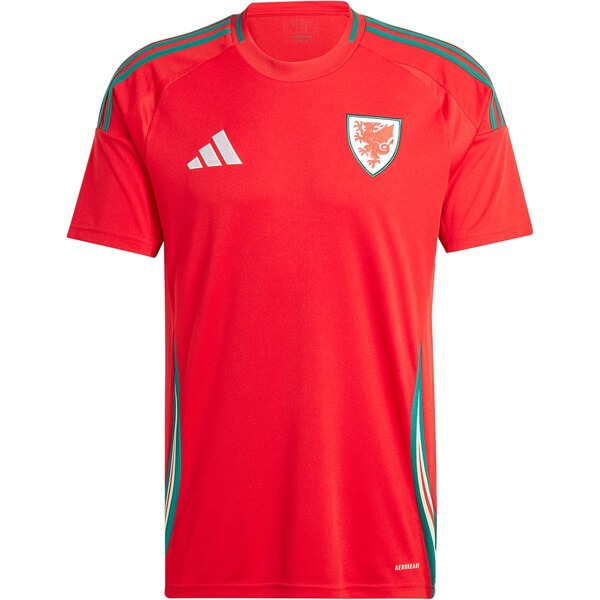Every football fan has got a deep appreciation for what football jerseys represent — team spirit, passion, and the beautiful game itself.
It’s the late 19th century, and football’s just starting to kick off (pun intended). Back then, players wore whatever they had — usually just regular shirts. But here’s the kicker: it was hard to tell who was on which team! Imagine trying to pass to your teammate and accidentally giving the ball to the opposition because everyone looked the same. Talk about an own goal!

That’s where jerseys came in. They started as a practical solution — a way to identify your teammates in the heat of the game. Early jerseys were pretty basic — often just a specific color or pattern. No numbers, no names, just “Hey, I’m on the blue team!”
The fascinating world of football jerseys is a journey that’s as colorful as the jerseys themselves.
Mid-20th Century Transformations
Now, fast forward to the 1920s and 30s. That’s when numbers started showing up on jerseys. It wasn’t just for looks — it helped referees keep track of who was doing what on the field. Imagine trying to give a yellow card to “that guy in the red shirt” — not very specific, right?
The real game-changer came in the 1960s and 70s. That’s when replica jerseys hit the market, and fans could suddenly wear the same shirts as their heroes. It was like Superman’s cape for the everyday fan — put on that jersey, and suddenly you’re part of the team!
As for celebrating legendary players, that’s a more recent trend. In the 80s and 90s, as sports merchandising exploded, wearing a jersey with your favorite player’s name and number became the ultimate way to show your loyalty. It’s like carrying a little piece of football history on your back.
Today, jerseys are a massive part of football culture. They’re not just for game day — they’re fashion statements, collector’s items, and a way to connect with other fans. Ever been to a different city and had someone yell “Go team!” because of your jersey? That’s the power of the football shirt!
Evolution of Jersey Materials and Design
The evolution of jersey materials is like a sci-fi movie for fabric nerds. We started with heavy cotton — great for warmth, not so great for those sweaty matches. Then came the synthetic revolution in the 1960s and 70s. Polyester became the MVP of jersey materials — lightweight, durable, and able to wick away sweat like a champ.
But wait, there’s more! The 21st century brought us high-tech fabrics that would make NASA jealous. We’re talking about materials that can regulate body temperature, reduce drag, and even help with muscle fatigue. It’s like wearing a super-suit!
After the “just a color” phase, teams started experimenting with stripes, hoops, and all sorts of patterns. The 1970s and 80s were particularly wild — think geometric designs that would make your eyes water.
Logos started becoming more prominent too. What began as simple badges evolved into intricate designs plastered across the chest. And let’s not forget sponsor logos — they started appearing in the 1970s and are now as much a part of many jerseys as the team crest itself.
Celebrating legendary players in the 1990s. It wasn’t just about wearing a current player’s number — fans started donning jerseys of retired greats. It’s like wearing a time machine.
Football Jerseys Innovators
Well, it’s hard to pin down one specific team, but Manchester United was certainly at the forefront. In the early 1990s, they realized the massive potential in selling replica jerseys. They started changing designs more frequently and marketing them aggressively. Other big clubs quickly followed suit.
But the real game-changer was probably the 1994 World Cup in the USA. That’s when jersey sales exploded globally. Teams and manufacturers realized they were sitting on a gold mine.
Today, jersey releases are major events. Some clubs even have multiple jerseys per season — home, away, third kit, special editions… It’s like a fashion show meets a football match!
And here’s a fun fact: some clubs now involve fans in jersey design. It’s like crowdsourcing meets football fashion.
Cultural Impact of Football Jerseys
The cultural impact of football jerseys is like trying to measure the depth of the ocean — there’s so much more beneath the surface than you might think.
First off, jerseys are a universal language. You could be in Rio, Rome, or Riyadh, and a jersey speaks volumes without saying a word. It’s an instant connection, a silent nod between strangers that says, “Yeah, we’re in this together.”
They’re also time machines. Put on a vintage jersey, and suddenly you’re transported back to that epic final, that last-minute goal, that season when your team defied all odds. It’s not just fabric; it’s wearable nostalgia.
But here’s where it gets really interesting — jerseys are identity markers. They’re not just about the team; they’re about you. Wearing a jersey says, “This is part of who I am.” It’s like carrying a piece of your heart on your sleeve… literally.
And that feeling? That adrenaline rush, that unity? That’s the magic of collective effervescence. It’s when a group of individuals becomes something more, something greater than the sum of its parts. The jersey is the visual representation of that connection.
Think about it: In a world that can often feel divided, a sea of people in matching jerseys is a powerful symbol of unity. It doesn’t matter where you’re from, what you do, or what you believe — in that moment, you’re all part of the same team.
Jerseys also democratize fandom. Not everyone can kick like Messi or sprint like Mbappé, but anyone can wear the shirt. It’s a way of saying, “I’m part of this too.”
We all have got cool stories about when you got it or wore it to a big match. And those stories they’re not just anecdotes; they’re your personal folklore. Each jersey becomes a repository of memories — the joy, the heartbreak, the camaraderie. It’s like each thread is woven with your experiences.
In essence, football jerseys have transcended their original purpose. They’re no longer just team identifiers, but cultural artifacts, personal talismans, and social connectors all rolled into one.




